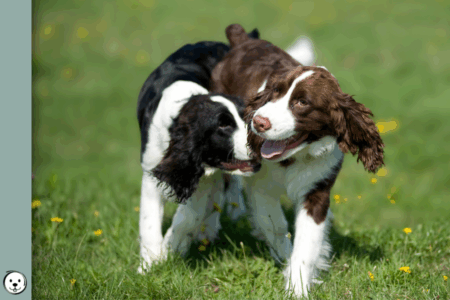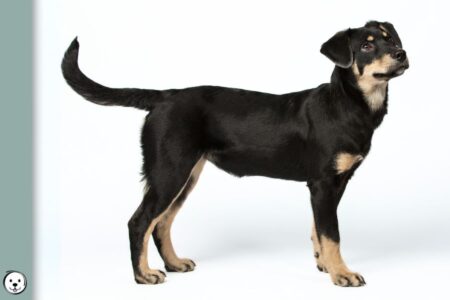The Mini Schnauzer is a spirited little dog that was bred to resemble a smaller version of the Standard Schnauzer. There are only a few Miniature Schnauzer colors that are officially recognized.
Standard Miniature Schnauzer Coat Colors
Let’s have a closer look at the different Miniature Schnauzer color patterns:
Black Miniature Schnauzer
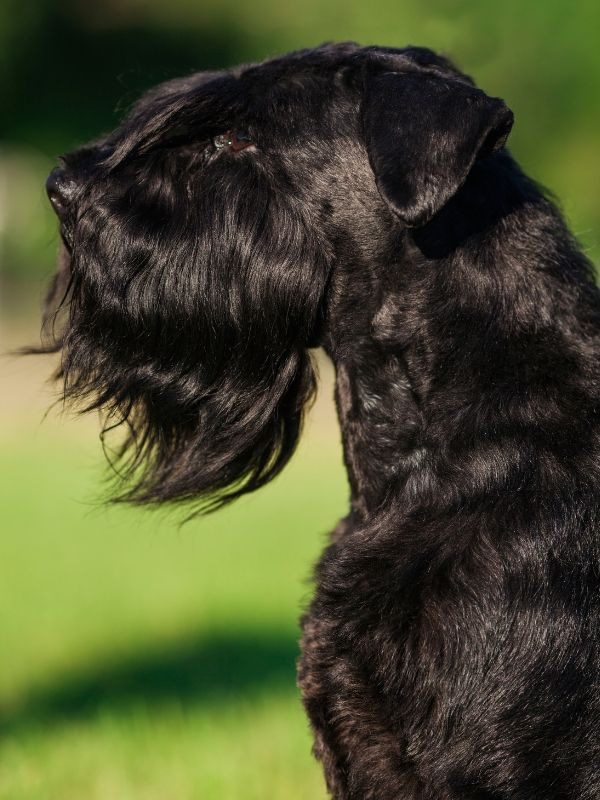
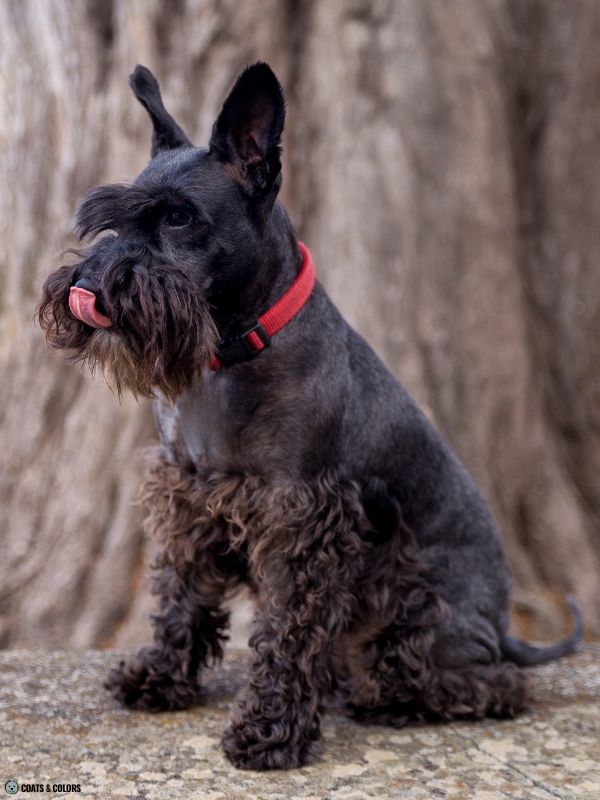

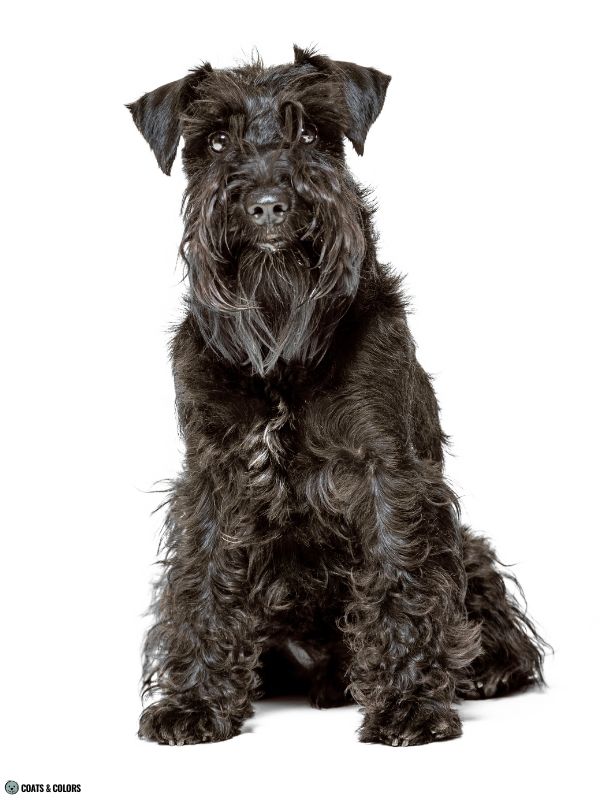
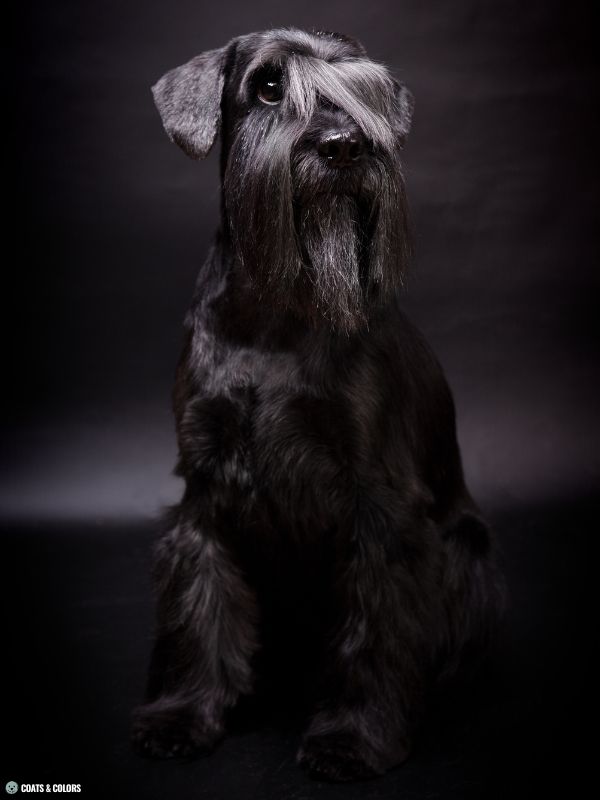

Black Miniature Schnauzers are mostly dominant black (E/- KB/-), only some are recessive black (E/- ky/ky a/a). Both patterns produce a solid black coat color.
The difference is that recessive black is an A locus pattern that has to come from both parents. And dominant black is a K locus pattern that only needs one copy to override a dog’s A locus.
In theory, dogs can be both, KB/- and a/a, with the dominant black overriding the recessive black pattern. In reality, this has no further effect on coat colors since a/a dogs are already kind of solid black.
Some black dogs might have pigment fading and fade to a dark gray color.
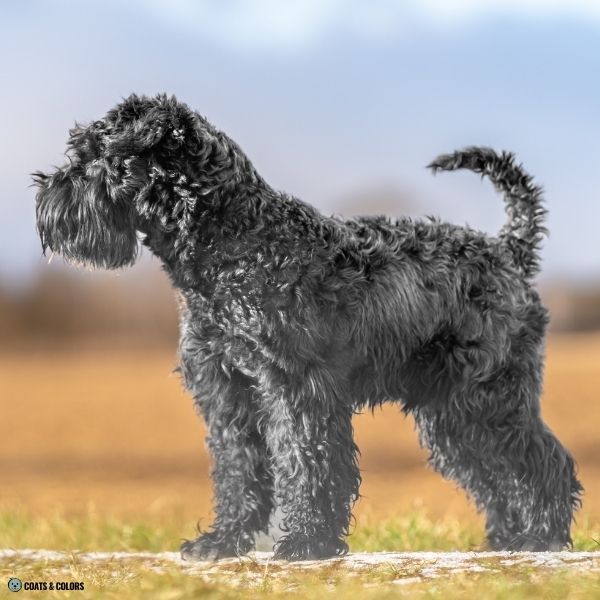
Black & Silver Miniature Schnauzer
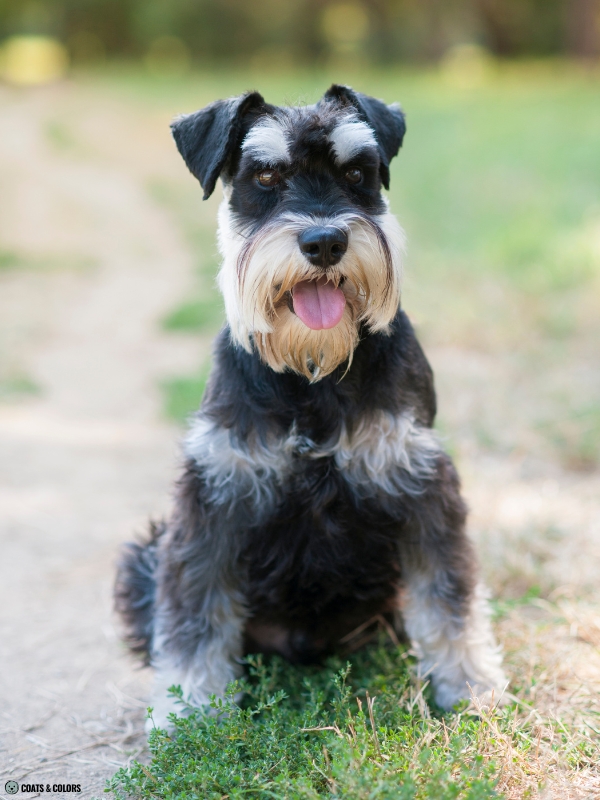
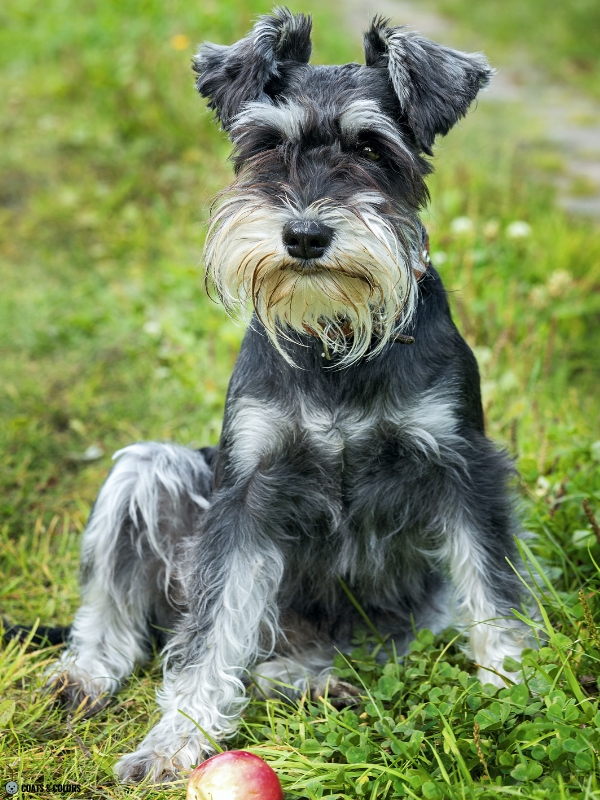
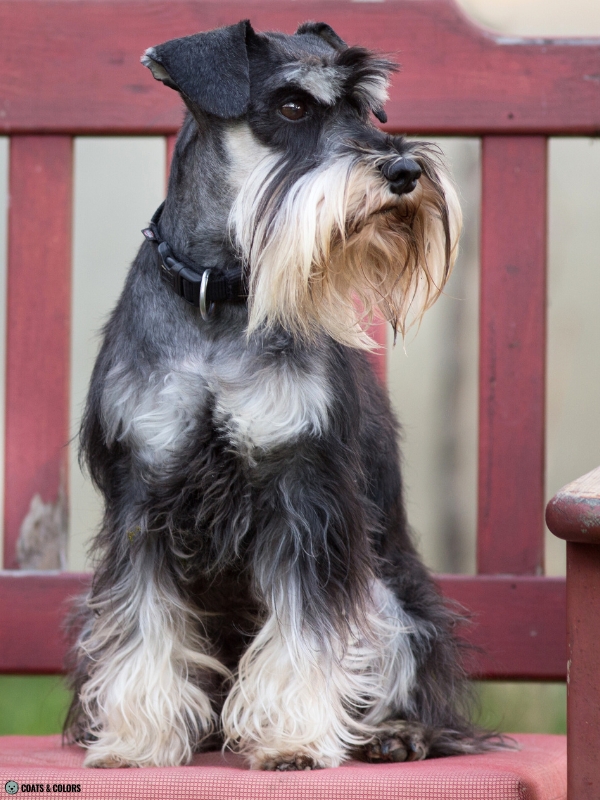

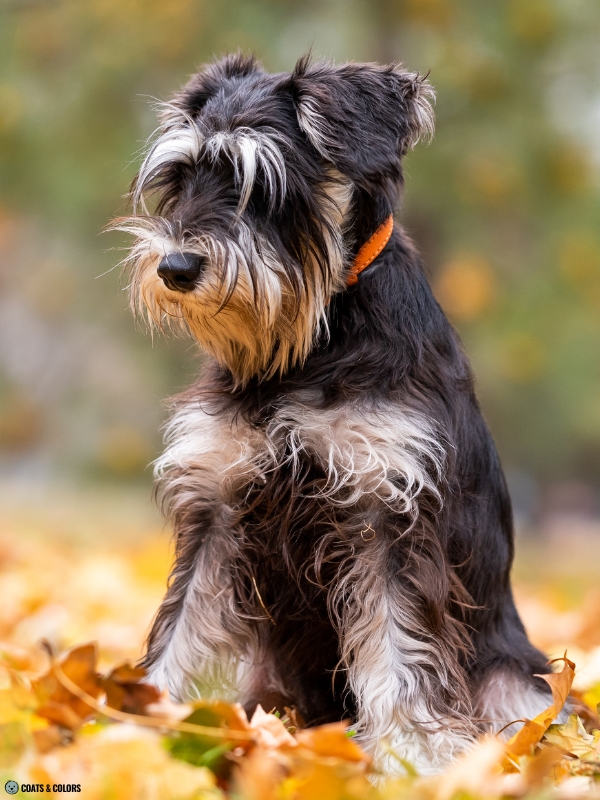
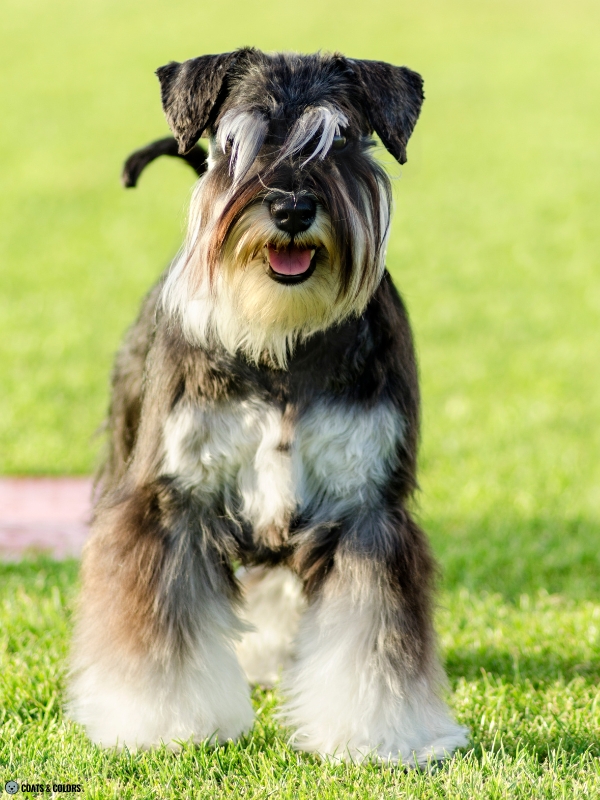
The breed term “black and silver” means a black-based tan point pattern (E/- ky/ky at/-) with pale silver tan markings. Some Schnauzers test as Em/- ky/ky aw/-and may or may not have a black mask.
All Schnauzer breeds have selected for as-light-as-possible phaeomelanin. To the point where their red intensity is so low that any phaeomelanin in their pattern looks ivory white or silvery white.
A black and silver Mini Schnauzer has a predominantly solid black coat with black underbody furnishings. His silver markings are located on his eyebrows, cheeks and beard, throat, in two triangles at the chest, on his lower legs and paws, the inside of the legs, and under his tail.
Puppies might look quite dark before their lighter points start to appear.

Salt & Pepper Miniature Schnauzer

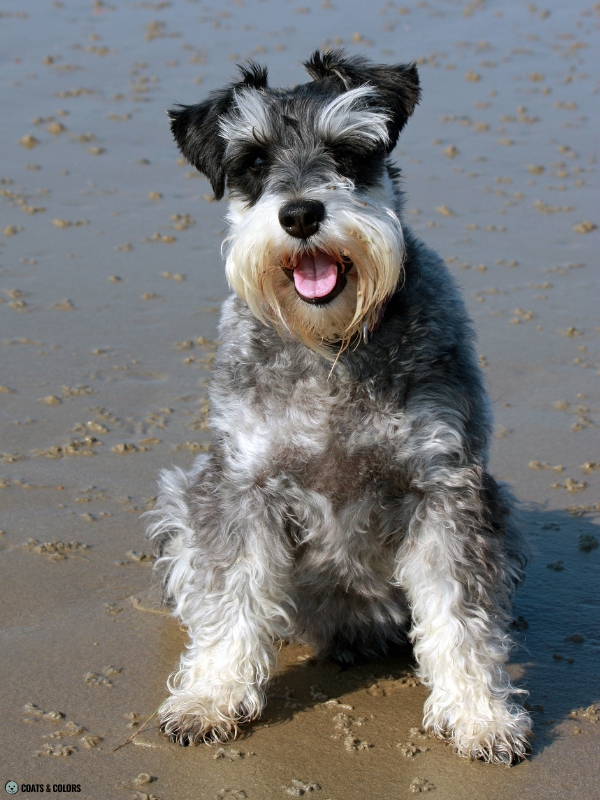
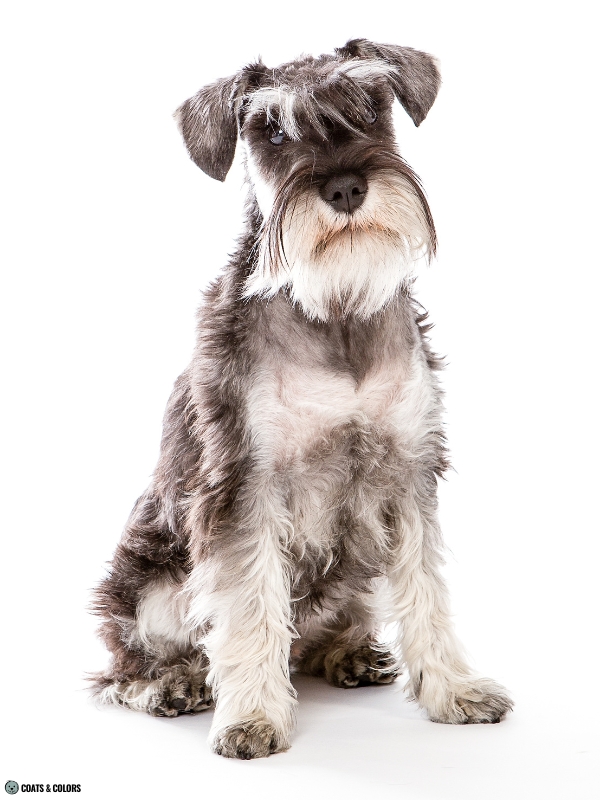


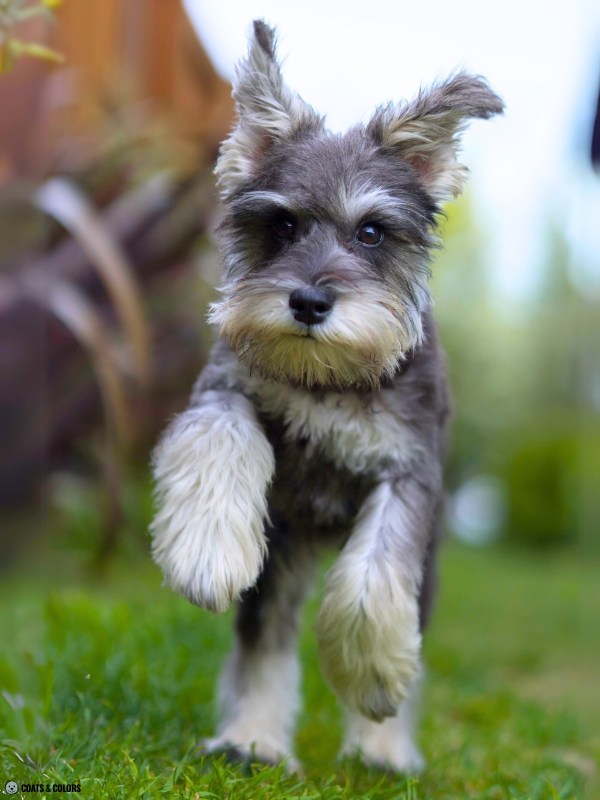
The breed term “salt and pepper” is unique to the Miniature Schnauzer breed, the other Schnauzers call the same pattern “pepper and salt“. In any case, this refers to a black-based agouti pattern (E/- ky/ky aw/-) with a very pale whitish phaeomelanin intensity.
Salt and pepper Miniature Schnauzers have clear markings in the same areas where a black and silver Schnauzer has his points. But their body coat is covered in banded hairs that create “peppering” by alternating between black eumelanin and white phaeomelanin pigment bands during hair growth.
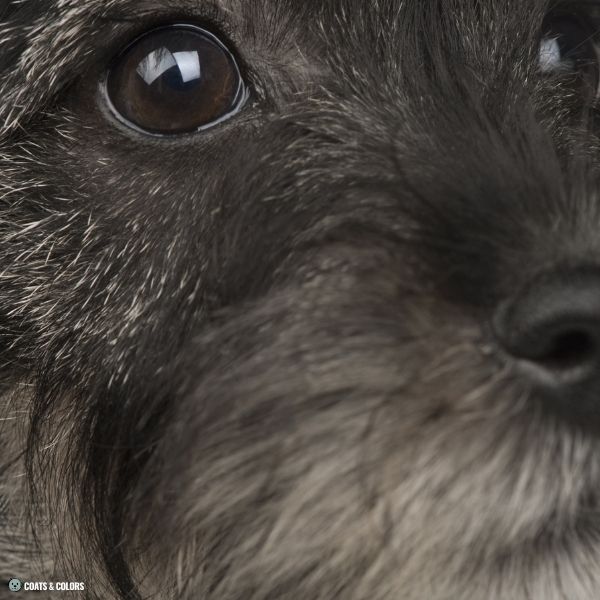
There is a lot of variation in agouti patterns with some dogs being lighter or darker than others. Oftentimes, darker phenotypes happen in heterozygous aw/at or aw/a dogs.
Some salt and pepper Miniature Schnauzers have progressive graying. This will fade all their black hair banding to gray and give a more uniform silvery gray coat without any visible “pepper”.
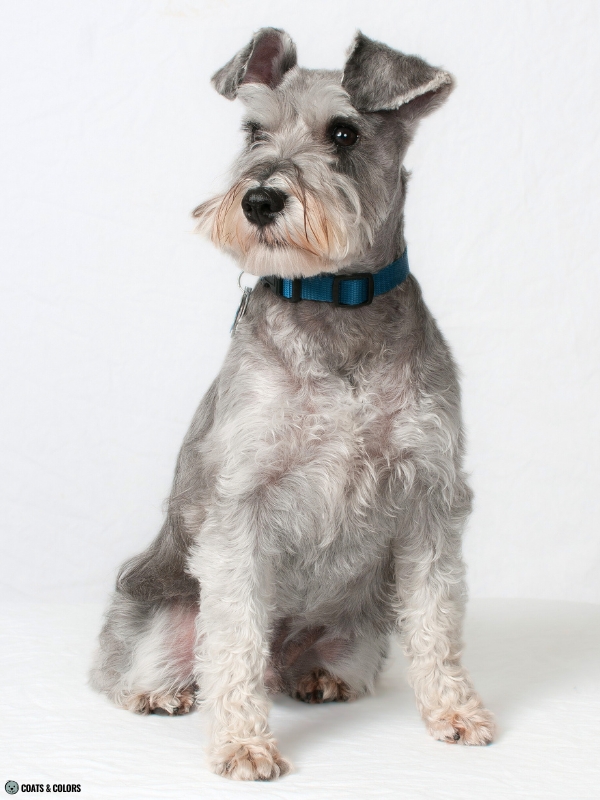
White Miniature Schnauzer
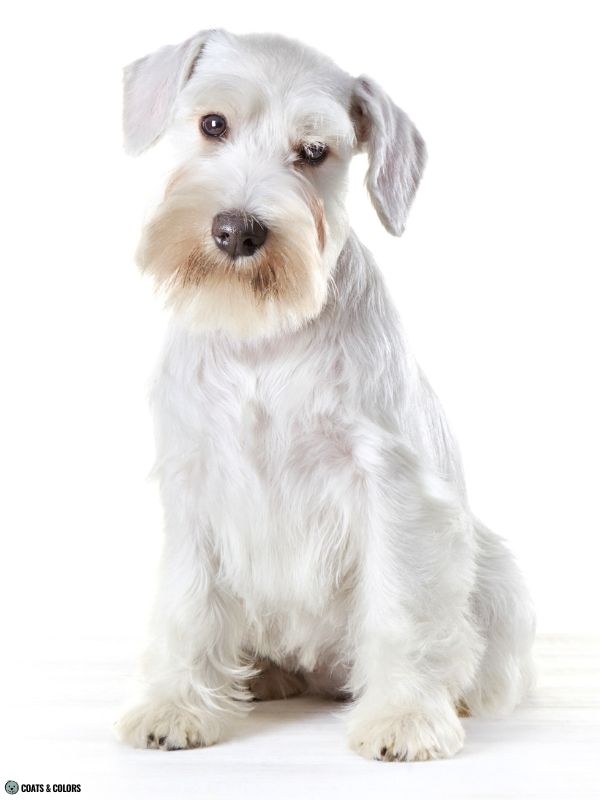
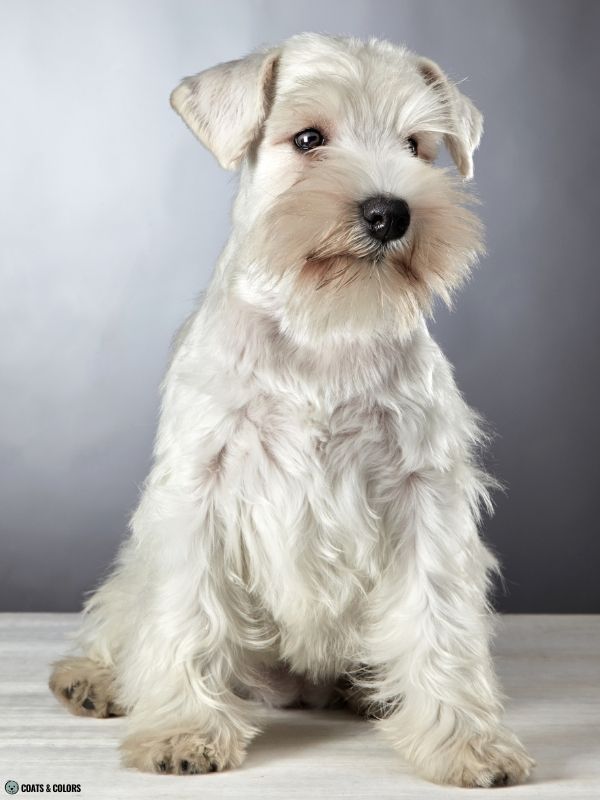

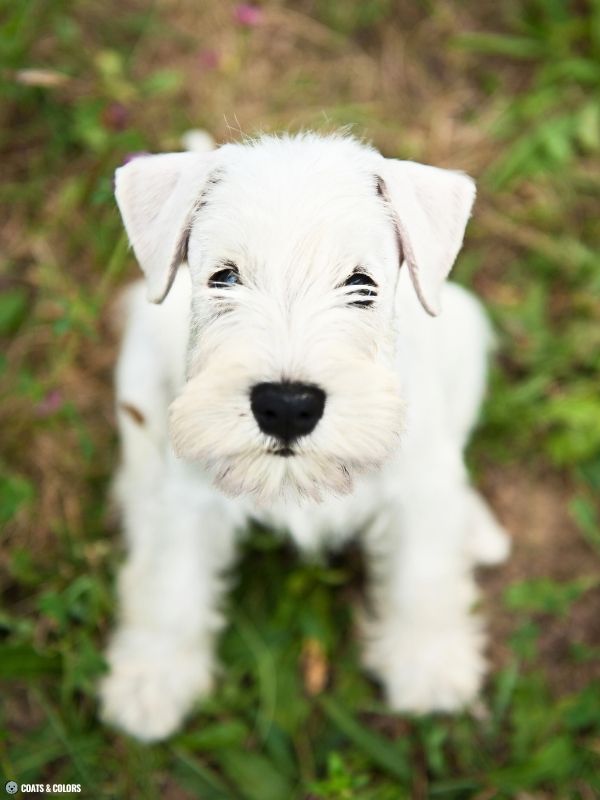

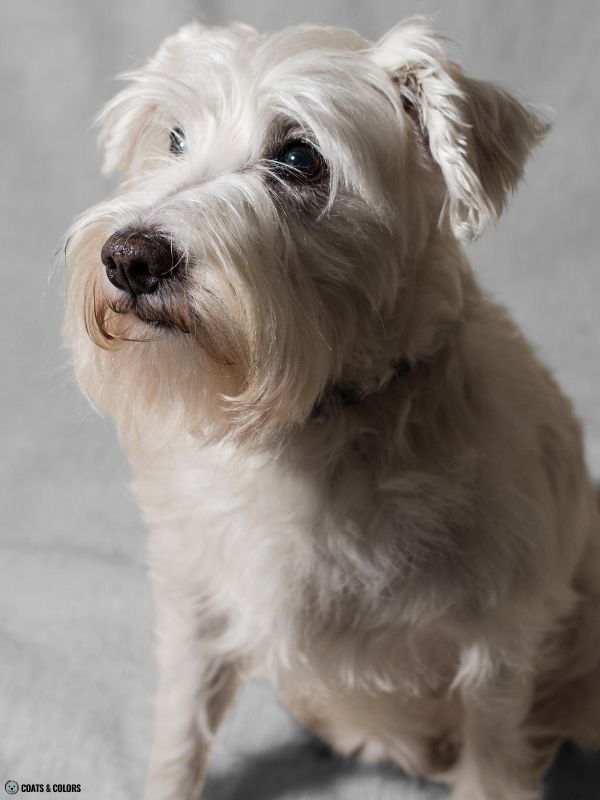
Only the FCI accepts solid white as a breed standard color in Miniature Schnauzers.
These dogs have a recessive red pattern (e/e). They can not produce eumelanin in their coat, only phaeomelanin. And with all their phaeomelanin lightened to white, this gives a solid white coat.
The pattern will also give them white whiskers. And it can sometimes cause their black nose pigment to fade. In addition, like many dogs with white coats, white Mini Schnauzers tend to have some red beard staining.
Non-Standard Miniature Schnauzer Coat Colors
Sometimes, these non-standard colors happen by accident due to recessive alleles. However, many non-breed standard colors are achieved by crossbreeding to introduce a non-standard trait.
Liver Miniature Schnauzer
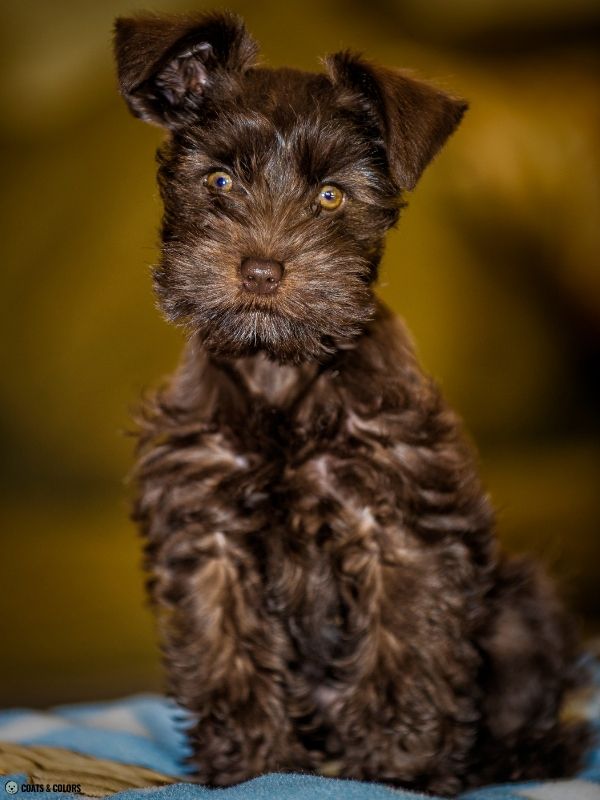
Liver (or chocolate) is a common term used for brown eumelanin (b/b).
This will affect any eumelanin a dog has in its coat color pattern as well as all his skin and body pigment (eye rims, lips, nose, gums, paw pads, nails, skin spots).
Brown pigment will also often cause lighter more yellowish eyes.
Miniature Schnauzers with brown eumelanin can have any pattern (brown is just a pigment color), traditional Schnauzer patterns will turn from solid black to solid liver, from salt and pepper to liver pepper, or from black and silver to liver & tan.
Combined with other traits, brown-based patterns can also have white parti spotting (liver parti, liver pepper parti, etc.) or show a merle pattern (chocolate merle, liver & tan merle, etc.).
Paired with graying, any brown pigment will fade to a beige color. And some white Schnauzers (which can not produce black or brown pigment in their coat) have a chocolate nose.
Blue & Lilac Miniature Schnauzer
Some color breeders introduced color dilution (d/d) into their lines.
This will turn any black pigment to blue or any liver brown pigment to lilac, including the nose color.
Merle Miniature Schnauzer
Merle removes some of the eumelanin pigment in random areas of a pattern. There has to be eumelanin to see a merle pattern, it will be hidden in patterns that are predominantly phaeomelanic like solid white!
Different allelic combinations of merle alleles can have different effects on coat color.
Less effective combinations of merle can be non-expressing or give a muted pattern, stronger versions can give classic marbling or some other patterns like tweed merle or minimal merle.
However, “too much merle” can start to delete pigment to white up to the point of a double merle phenotype. And this can lead to serious health impairments and makes it extra necessary for breeders to educate themselves about color genetics and merle genetics in particular.
Parti Miniature Schnauzer
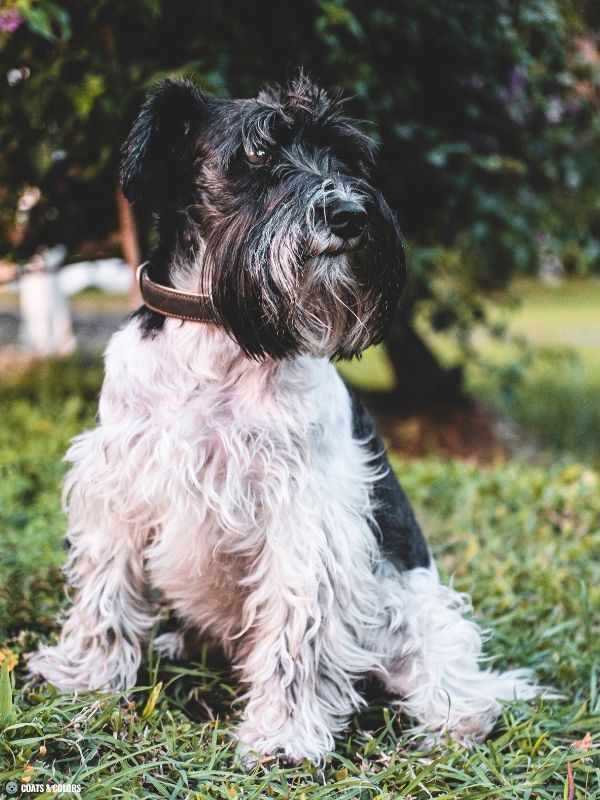
White piebald spotting (sP) creates minimal to extended white patterns.
This will erase some portions from any affected color pattern. Dogs can be any pattern “plus white“, e.g. black & white, liver & white, salt and pepper & white, etc.
The breed term for white spotting in Miniature Schnauzers is “parti“.
Silver Platinum Miniature Schnauzer
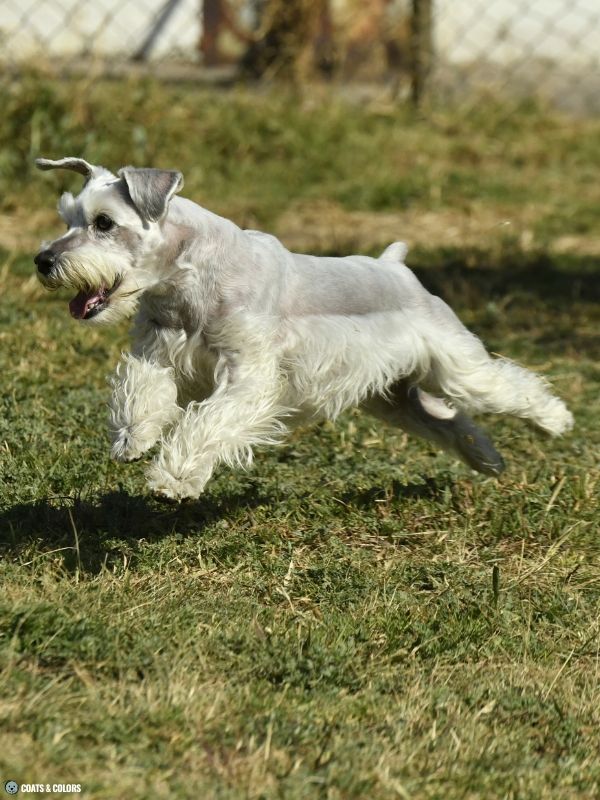
Dogs with super strong progressive graying can end up with a very uniform metallic silver gray coat. The graying trait can affect any pattern but was mostly bred into salt and pepper Schnauzers.
These dogs lose all their peppering to pigment fading and will turn from an almost black agouti puppy coat into an adult coat so light gray that it borders on white.
These dogs are sometimes called “platinum silver” in color breeding.
Red & Wheaten Miniature Schnauzer
Traditional Schnauzer patterns are known for their very very low phaeomelanin intensity. In general, lighter phaeomelanin colors are recessive to more intense colors.
Meaning that two white Schnauzers can not produce a red puppy.
By crossbreeding to get traits like merle or brindle into their dogs, color breeders also re-introduced yellow and red phaeomelanin colors back into Miniature Schnauzers.
Color breeders often call solid recessive red dogs with colors other than white wheaten or red.
Red pigment can also affect the clear markings in an agouti or tan point pattern, turning a black and silver into a common black and tan. Or a salt and pepper into a more regular Dachshund-type agouti.
To be fair, some lines of purebred black Schnauzers can also produce yellow pigment (because solid black dogs don’t have phaeomelanin and were never under pressure to select for a specific color).
Sable Miniature Schnauzer
Sable (Ay) is the most dominant pattern in the A locus series.
However, both white Miniature Schnauzers (e/e) and black Miniature Schnauzers (KB/-) do not express their A locus pattern. Both patterns can hide that a dog has a sable variant.
Sable gives a mostly phaeomelanic coat with varying degrees of dark hair tipping on the upper body. Sable dogs can have any red intensity from white to red, some express a dark mask on their muzzle.
Brindle Miniature Schnauzer
Brindle Schnauzers (kbr/-) express eumelanin striping on top of any phaeomelanin in their pattern.
They can have a mask (Em/-) or a wild type allele (E/-) but thy can not be recessive red (e/e) since white Schnauzers can not produce eumelanin in their coat which overrides brindle patterns.
Brindle can affect any A locus pattern and come in different color combinations. For example, dogs can be sable brindle, salt and pepper brindle (agouti brindle), black and silver brindle (brindle point). They will have black stripes in black-based patterns and brown stripes in liver-based patterns.
Miniature Schnauzer Coat Colors Overview
The breed standard describes all the different traits a Miniature Schnauzer should have.
This includes his conformation and temperament but also the coat texture and color.
The major kennel clubs often use their own standards provided by their affiliated breed club. These standards are usually similar in their general outline but can differ in details like coat color.
Let’s see what different clubs have to say about the accepted Miniature Schnauzer colors[1-3]:
| AKC | FCI | KC | |
|---|---|---|---|
| Black | ✅ | ✅ | ✅ |
| Black & Silver | ✅ | ✅ | ✅ |
| Salt & Pepper | ✅ | ✅ | ✅ |
| White | – | ✅ | ✅ |
Miniature Schnauzer Coat Color Genetics
A dog’s coat gets its colors from two pigment types called eumelanin and phaeomelanin. Different proportions of colors in a particular dog’s coat create different patterns.
These are genes and alleles involved in Miniature Schnauzer’s standard coat colors and patterns:
| E-LOCUS | Em = melanistic mask E = normal pattern e = recessive red |
| K-LOCUS | KB = dominant black kbr = brindle ky = normal pattern |
| A-LOCUS | Ay = sable aw = agouti at = tan points a = recessive black |
| B-LOCUS | B = black eumelanin b = brown eumelanin |
| D-LOCUS | D = normal eumelanin d = diluted eumelanin |
| S-LOCUS | S = solid sP = white spotting |
| Graying | G = progressive graying g = no progressive graying |
| Intensity | white wheaten, red |
| M-LOCUS | M* = merle m = non-merle |
Eumelanin Colors
All traditionally colored Miniature Schnauzer are fixed for black eumelanin. Even if not present in a dog’s coat color pattern it is always eumelanin that gives color to a dog’s nose, skin, nails or eyes.
Some Schnauzers show progressive graying. This can fade any black in their pattern to a lighter grayish color. This can resemble color dilution. However, dogs with faded black will keep their black nose.
This phenomenon seems to be limited mainly to dogs bred under AKC guidelines. The American Miniature Schnauzer Club says “as the dogs age and are clippered, blacks and black and silvers may fade from black to dark gray while salt and peppers may fade to a lighter shade of gray“.

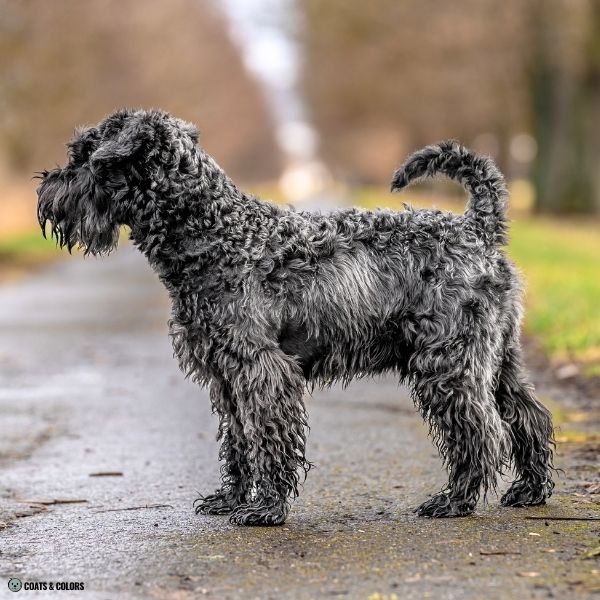
Phaeomelanin Intensity
The phaeomelanin intensity is what makes Schnauzer patterns interesting.
Schnauzers are one of the few breeds that bred for very pale phaeomelanin in their patterned dogs. Most other breeds with white phaeomelanin only come in recessive red (or only the recessive red dogs show pale phaeomelanin and other patterns come with red or yellow pigment).
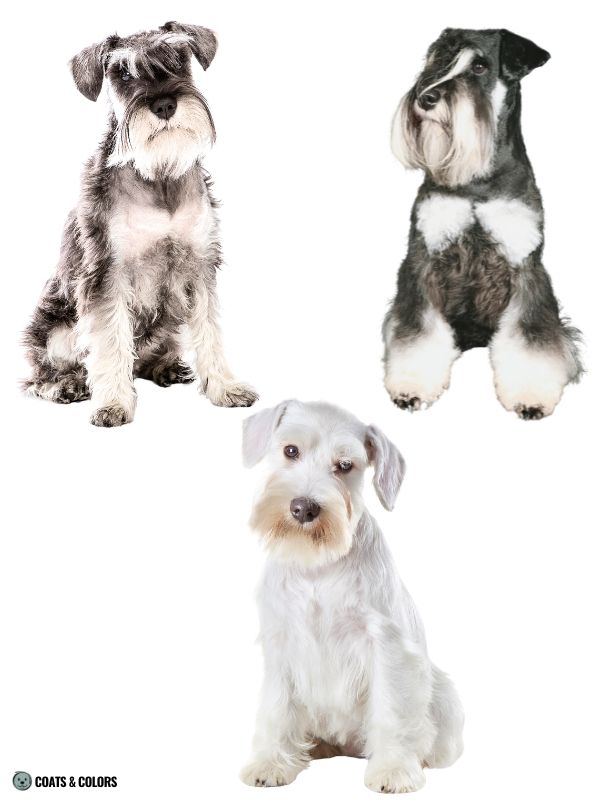
White Spotting
Standard-colored Miniature Schnauzers are supposed to have a solid pattern.
Some can have residual white. However, it can be hard to see a minimal spotting white pattern against the pale silver background in a salt and pepper or black and silver or solid white pattern.
And white markings were introduced into pet lines to produce parti Schnauzers.
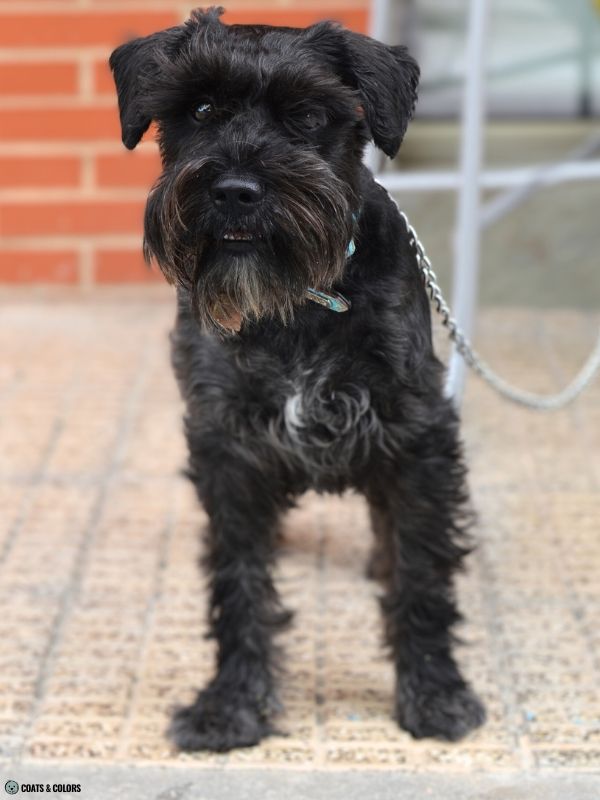
Color Patterns
Breed standards almost always use breed terms.
And Miniature Schnauzers are no exception.
| Color Term | Genotype |
|---|---|
| Black | E/- KB/- |
| Black & Silver | E/- ky/ky at/- |
| Salt & Pepper | E/- ky/ky aw/- |
| White | e/e |
Miniature Schnauzer Nose Color
Miniature Schnauzers traditionally only produce black eumelanin (B/B D/D).
So whatever a Miniature Schnauzer’s coat color pattern, he will always have dark or light brown eyes, a black nose and black pigment on their lips, eye rims, paw pads or nails.
Some white Miniature Schnauzers can have fading nose pigment.
Plenty of color breeders produce liver-based patterns (b/b). These dogs come with a liver nose.
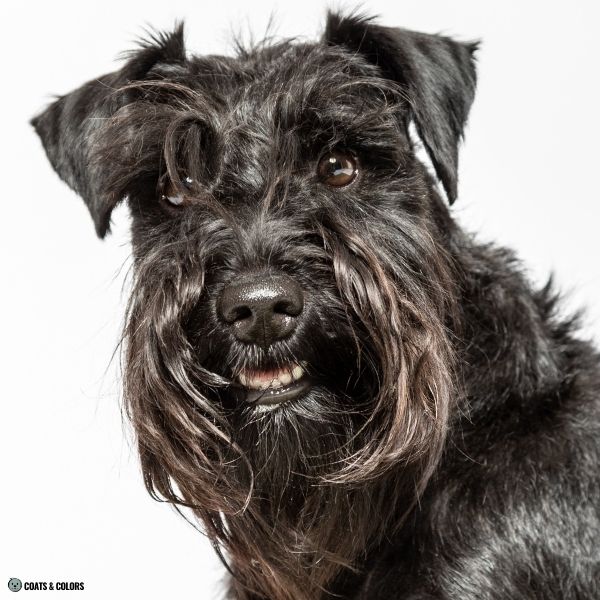

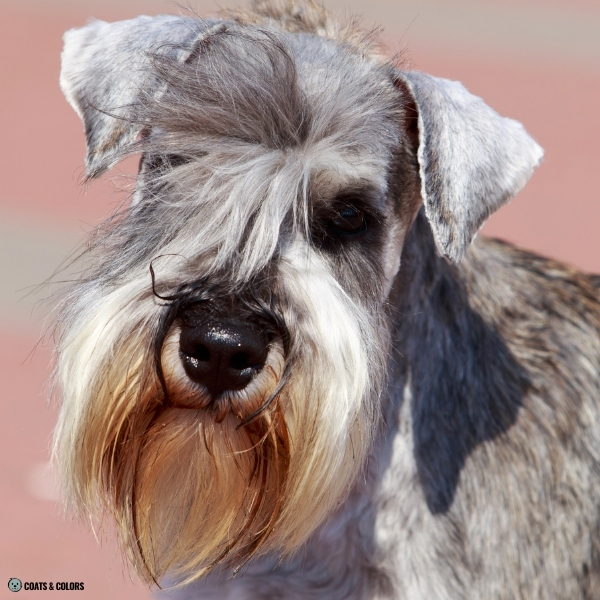
Miniature Schnauzer Eye Color
Miniature Schnauzers are supposed to have dark brown eyes.
Again, lighter pigment colors like liver often produce lighter eyes.
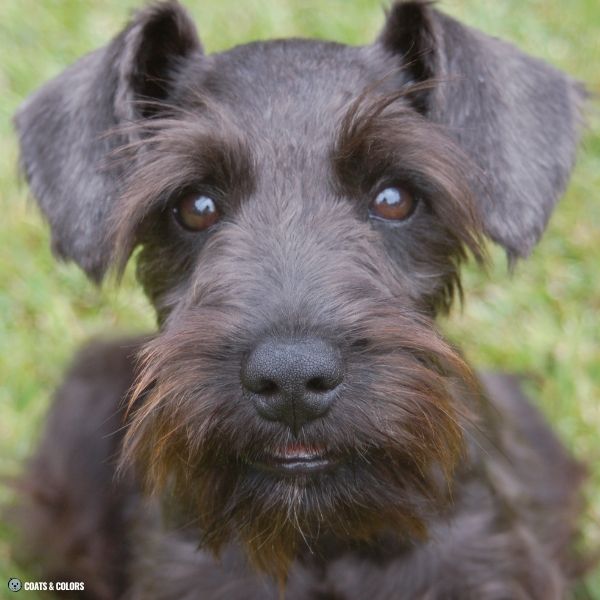
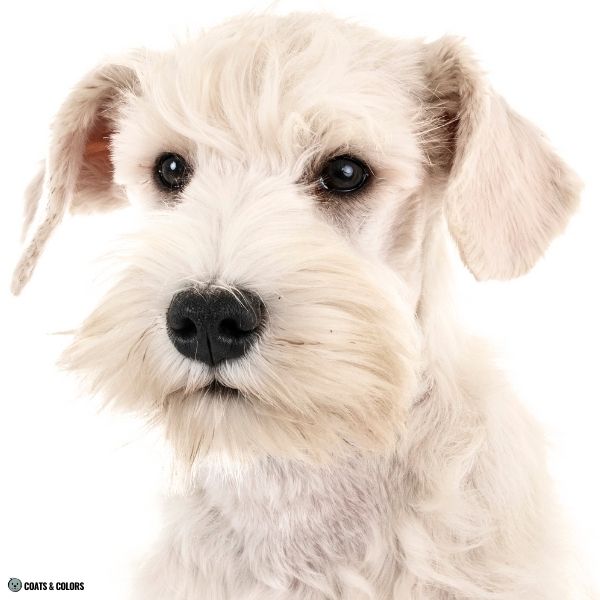
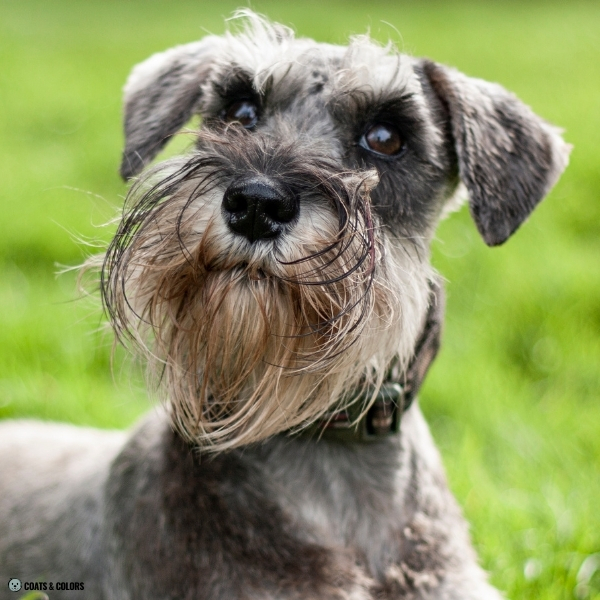
Miniature Schnauzer Coat Types
The Miniature Schnauzer is a furnished breed with a wire-haired coat texture (F/- L/-). Some dogs have fluffier coat than others with some dogs actually having a long coat (l/l).
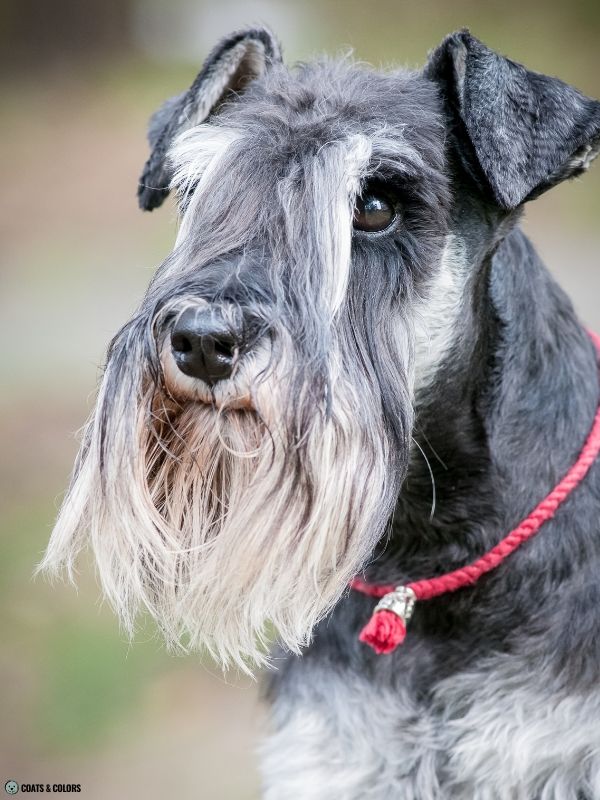
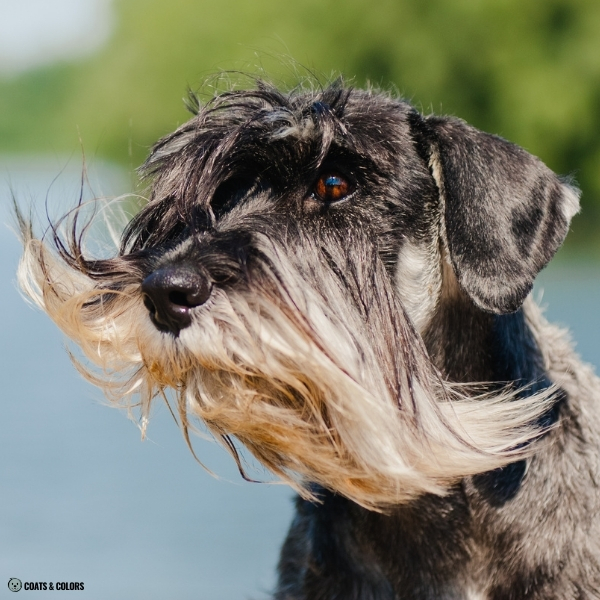

Other Coat Types in Miniature Schnauzers
Very few purebred Schnauzers have a curly variant. One copy can already produce a wavy coat.
Long silky leg hair and curly coats are very common in pet-bred varieties of Mini Schnauzer (because crossbreeding for new colors can also introduce traits that affect coat type).

Learn More
Links
[1] American Kennel Club (AKC): Official Standard of the Miniature Schnauzer (pdf)
[2] Fédération Cynologique Internationale (FCI): Miniature Schnauzer Breed Standard (pdf)
[3] The Kennel Club (KC): Miniature Schnauzer Breed Standard
[4] Dreger et al. (2019). True Colors: Commercially-acquired morphological genotypes reveal hidden allele variation among dog breeds, informing both trait ancestry and breed potential. PLoS ONE 14(10): e0223995. https://doi.org/10.1371/journal.pone.0223995

Hi! I’m Steffi. I am a biologist and a big time dog nerd. You are curious about coat color genetics? You’ve come to the right place! Read more.





